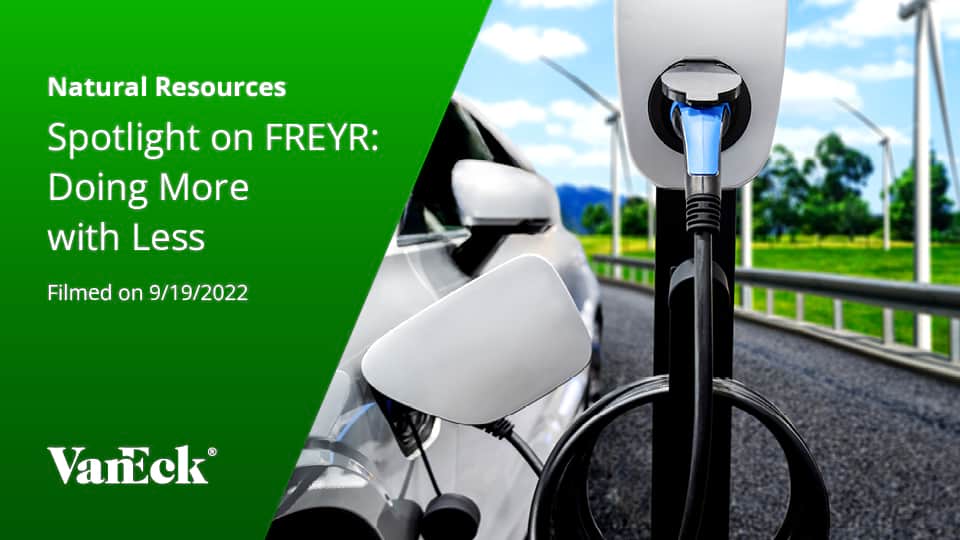The Inflation Reduction Act: Certainties But Still Lacking
October 07, 2022
Watch Time 3:13 MIN
Learn from Analyst Veronica Zhang about how the Inflation Reduction Act provides certainty in funding for the resource transition sector in the U.S. but how the size and scope of the Act is lacking.
The Inflation Reduction Act: A Green Catalyst
A lot of media has really focused on the fact that it is a bill that we have been waiting for this year.
Certainly it is a good bill to come through. We like certainty. We like the fact that the tax extensions were put in place for 10 years, which gives certainty to builders and project developers in terms of outlaying their CapEx and not having to have to decide whether, in any given year, certain extensions are going to be put in place by the government.
We think the certainty is good. However, the overall size of the Bill is still lacking relative to some counterparts. In Europe, there has been over a trillion dollars earmarked towards going green and moving to more renewable resources. Even in China and India, even though there have not been direct targets, there is a lot being done on the regional and local levels to move towards a more sustained renewable–based economy.
In the U.S., while the tax credits for solar wind are really great and I am glad they have been put in place, we think that there is definitely a lot more that can be done in other verticals.
One of them is agriculture. In agriculture, what was in the Bill was just a smidge of what was expected in Build Back Better, and those funds were basically earmarked towards helping farmers being able to keep decent balance sheets in order to operate. That does not do a ton for us in terms of actually addressing emissions, in which agriculture hits 25% of globally.
The technologies that are emerging, such as green hydrogen, such as nuclear, such as carbon capture, there were incentives that were put in place for that to ignite more development and to get those technologies up to scale. We think in order to really, really move the ball along, you're going to need to incite quite a bit more to get developers really on board to take the risk to fund those projects and to get those projects started, especially since it takes many years to build out and we are probably not going to see fruition until probably 10 years later.
There are a lot of verticals that I think the government can address. Ultimately, however, it is also largely up to to the regional and local level, states themselves, to incentivize more development of whatever technology that they think will benefit their labor source, benefit their state's employment and ultimately, stitch into the broader web of what we are seeing on national developments there.
IMPORTANT DISCLOSURE
The views and opinions expressed are those of the speaker and are current as of the video’s posting date. Video commentaries are general in nature and should not be construed as investment advice. Opinions are subject to change with market conditions. All performance information is historical and is not a guarantee of future results. For more information about VanEck Funds, VanEck ETFs or fund performance, visit vaneck.com. Any discussion of specific securities mentioned in the video commentaries is neither an offer to sell nor a solicitation to buy these securities. Fund holdings will vary. All indices mentioned are measures of common market sectors and performance. It is not possible to invest directly in an index. Information on holdings, performance and indices can be found at vaneck.com.
This is not an offer to buy or sell, or a solicitation of any offer to buy or sell any of the securities mentioned herein. The information presented does not involve the rendering of personalized investment, financial, legal, or tax advice. Certain statements contained herein may constitute projections, forecasts and other forward looking statements, which do not reflect actual results, are valid as of the date of this communication and subject to change without notice. Information provided by third party sources are believed to be reliable and have not been independently verified for accuracy or completeness and cannot be guaranteed. The information herein represents the opinion of the author(s), but not necessarily those of VanEck or its employees. Past performance is not a guarantee of future results.
Sustainable Investing Considerations: Sustainable investing strategies aim to consider and in some instances integrate the analysis of environmental, social and governance (ESG) factors into the investment process and portfolio. Strategies across geographies and styles approach ESG analysis and incorporate the findings in a variety of ways. Incorporating ESG factors or Sustainable Investing considerations may inhibit the portfolio manager’s ability to participate in certain investment opportunities that otherwise would be consistent with its investment objective and other principal investment strategies.
ESG investing is qualitative and subjective by nature, and there is no guarantee that any of the proprietary assessments of material ESG issues or the factors used by VanEck, or any judgment exercised by VanEck will reflect the opinions of any particular investor. Information regarding responsible practices is obtained through voluntary or third–party reporting, which may not be accurate or complete, and VanEck is dependent on such information to evaluate a company’s commitment to, or implementation of, responsible practices. Socially responsible norms differ by region. There is no assurance that the socially responsible investing strategy and techniques employed will be successful. An investment strategy may hold securities of issuers that are not aligned with ESG principles.
ESG integration is the practice of incorporating material environmental, social and governance (ESG) information or insights alongside traditional measures into the investment decision process to improve long term financial outcomes of portfolios. Unless otherwise stated within an active investment strategy’s investment objective, inclusion of this statement does not imply that an active investment strategy has an ESG–aligned investment objective, but rather describes how ESG information may be integrated into the overall investment process.
Investing involves risk, including possible loss of principal. Please call 800.826.2333 or visit vaneck.com for a free prospectus and summary prospectus. An investor should consider the investment objective, risks, and charges and expenses of the investment company carefully before investing. The prospectus and summary prospectus contain this and information about the investment company. Please read the prospectus and summary prospectus carefully before investing.
No part of this material may be reproduced in any form, or referred to in any other publication, without express written permission of Van Eck Securities Corporation.
© Van Eck Securities Corporation, Distributor, a wholly owned subsidiary of Van Eck Associates Corporation.
Van Eck Securities Corporation, Distributor
666 Third Avenue, New York, NY 10017
Related Insights
October 04, 2022
October 04, 2022
Related Topics
Related Insights
January 30, 2024
January 29, 2024
January 29, 2024
December 27, 2023

